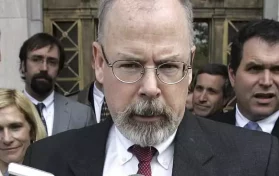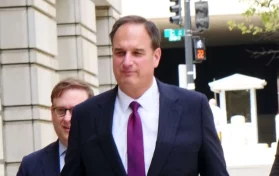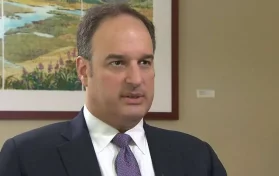
During the 2016 election cycle, Americans witnessed perhaps one of the most vicious campaigns, at least where dirty political tricks are concerned. In the last few weeks leading up to the election, allegations were made against Donald Trump including those of sexual harassment and colluding with the Russian government in order to win the election. Trump himself slung a bit of mud; he began referring to his opponent as “Crooked Hillary” and crowds at his rallies would routinely break out in the chant “Lock her up!” in reference to his opponent. Some mud-slinging is typical during political campaigns, but the 2016 election cycle was historic.
The allegations of a Trump connection with Russia would end up being the catalyst for a future impeachment of the 45th president, Donald Trump. While his enemies were gleeful regarding the possible removal of Trump from office, Trump never relented in saying that he’d been illegally spied upon, and he denied any wrongdoing.
Years later, Trump was vindicated initially through the Mueller investigation, but the Durham investigation has done more to clear the Trump family name of any illicit connection to Russian President Vladimir Putin or the Russian government.
The Steele dossier, which was debunked as nothing more than salacious gossip, was the basis for the investigation into the Trump family. Trump’s claims that he was spied upon were found to be valid; the fake dossier was the catalyst for the FISA warrants that were utilized to provide surveillance on servers in the Trump tower and later in the White House. Eventually, special counsel Robert Mueller’s investigation found no wrongdoing on the part of the Trump family and no Russian collusion as had been alleged during the 2016 campaign.
The Durham investigation, headed by special counsel John Durham, has only further vindicated President Trump. Durham’s investigation has net three arrests, with one case being currently litigated. This case involves a former Perkins Coie partner, Michael Sussmann. Sussmann was charged with lying to the FBI, as was Ivan Danschenko. Danshenko was the source of the information included in the Steele dossier, and he has also been charged with lying to the FBI. Sussmann is alleged to have contacted then FBI counsel James Baker, telling Baker he needed to share some sensitive information with him. The crux of the case against Sussmann alleges that he told Baker he was coming of his own accord, not on behalf of a client. At the time, Perkins Coie was providing legal counsel to the Clinton campaign.
On Friday, former Clinton campaign manager Robby Mook offered some rather damning testimony. Mook testified that he was in attendance at a senior campaign officials meeting where they were told of “strange cyberactivity that suggested a relationship between the Trump Organization and Alfa Bank.” As a group, the campaign officials decided to share the information with a reporter from Slate magazine.
Mook related that he decided to take the same information to Hillary Clinton herself. Mook said, “We discussed it with Hillary . . .she agreed with the decision.” Mook said that the campaign officials personally had not vetted the information, but they hoped that the reporter would do so and “write what they believe is true.” This story came out in October 2016, and soon after, Hillary Clinton tweeted about the story.
Sussmann’s defense is that he went to James Baker “as a concerned citizen,” and that the Clinton campaign wouldn’t have wanted him to take the information to the governmental agency. Both Mook and Marc Elias (with whom Sussmann worked at Perkins Coie) to reaffirm that they didn’t authorize Sussmann to go to the FBI.
Mook went on to claim that he didn’t know about Perkins Coie “sharing information with the media” until Sussmann was indicted; Elias says that he didn’t know about the meeting until around the same time.
The prosecutors in the case claim that Clinton campaign’s “media blitz” – including the tweets by Hillary, are really the “culmination” of Sussmann’s meeting. According to the prosecution’s case, the end goal was to garner media coverage and hopefully spur the FBI to start an investigation into the Trump Organization.




